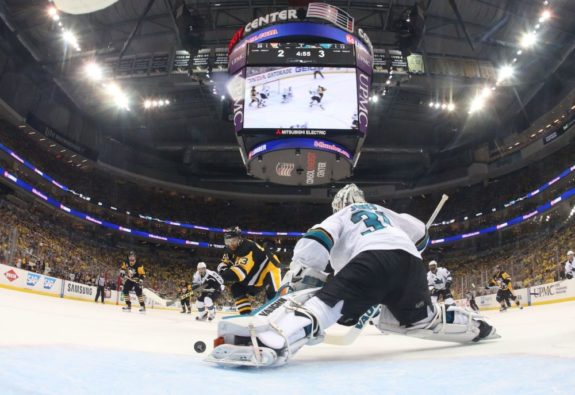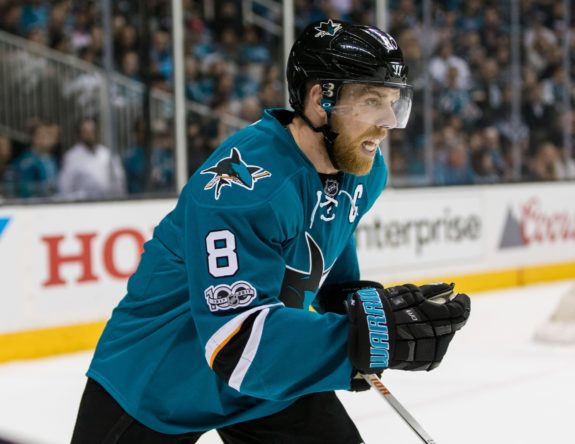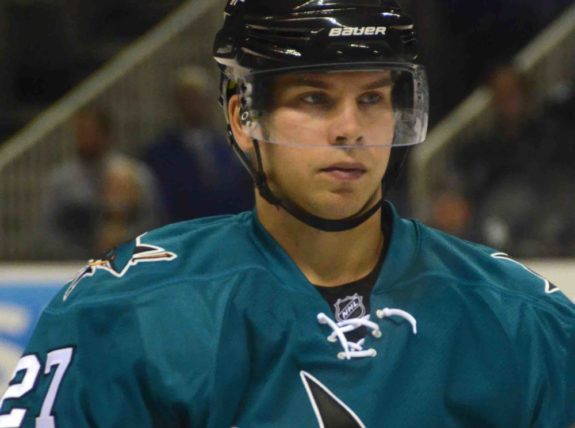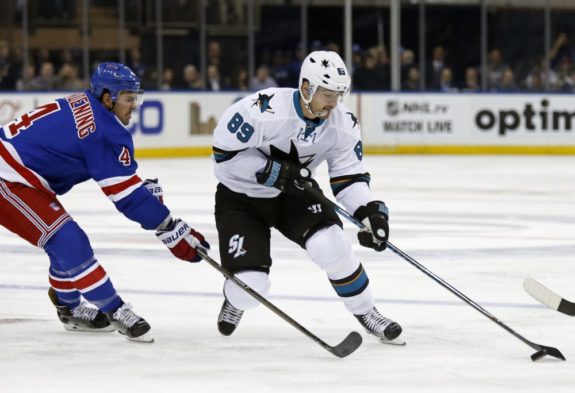The San Jose Sharks have already played three seasons in 2017-18. Season one was the opening game, which was brief, painful and over quickly, a 5-3 loss to Philadelphia. The second season lasted 11 games and the Sharks came away with an 8-3-0 record. In every one of these games, San Jose was competitive.
The third season covers two games and is the most important season to date. These were games against the league’s top teams, the Tampa Bay Lightning and Los Angeles Kings. In both games, the Sharks were blown out, resulting in a 0-2-0 record. Neither game was close and the Sharks were down at least three goals for the entire final period. and goalie Martin Jones was pulled. Combined, San Jose was outscored 9-2.

The most recent game against the Lightning showed how San Jose struggles to compete against the elite teams but also provided a blueprint for how they can compete better.
Playing into Lightning Game
Tampa Bay is among the league’s fastest and highest scoring teams. It works in the Lightning’s favour if the game looks like a track meet. Against them on Nov 8, the Sharks opened the scoring 25 seconds into the game on an energetic first shift that gave the Sharks the confidence that they could match the energy and speed of the Bolts.
They decided to play into the Lightning’s system. Big mistake. By the end of the opening period, not only was the game tied but the Lightning had the momentum, starting the second period with a power play.
Related: San Jose Sharks Reality and Rumors
Suboptimal Penalty Kill Decision
With 33 seconds left on Tampa’s power play to open the second frame, for some reason, the Sharks coaches decided to gamble, a suboptimal decision.
San Jose has a highly effective penalty kill but instead of using their best penalty killers, they used two forwards who rarely see the ice on the PK: Joe Thornton and Joe Pavelski. Why would the coaches choose these players? The reason stemmed from the player in the penalty box, Joonas Donskoi. It seems the coaches wanted the Donskoi, Thornton and Pavelski line on the ice once the power play ended.

In 14 games this season, both Melker Karlsson and Chris Tierney have over 26 minutes of penalty killing time and they have been really good. Twenty-six minutes is more than Pavelski’s short-handed ice time this season and last season combined, for a total of 95 games. And since the start of the 2015-16 season, with over 170 games played, Thornton has a meager seven minutes of penalty-kill time in total, which equates to two seconds per game.
Mismatched Sharks
Pavelski and Thornton did not belong on the ice against Tampa Bay’s elite power play.
Donskoi left the box just moments before Tampa Bay scored and never got into an effective defensive position. While racing to get into the play, he did a fly-by past Nikita Kucherov, the league’s top goal scorer and Kucherov used a one-timer from the slot to beat Jones to make it a 2-1 game.

The Sharks coaching staff took a shortcut, feeling they could risk having the wrong penalty killers out there for a short time. It was not a smart risk.
Martin Jones Makes It Worse
The next goal was frustrating. A rather harmless backhanded shot from Slater Koekkoek from a sharp angle somehow slipped through Jones’ pads, making the score 3-1. You can find this misplay in the dictionary under “soft goal.” While Jones has been excellent for most of the season, the mistake was a game-changer. The Lightning were outplaying San Jose, but the Sharks were still in the game. Going from a one-goal deficit to a two-goal deficit turned a molehill into a mountain.
Mental Miss
The mountain got bigger when the Sharks, inexplicably, gave the Lightning a quasi-power play. There was no penalty, but for some reason, the Sharks only had four skaters on the ice. And wouldn’t you know, the Bolts were happy to accept the gift, with Vladislav Namestnikov scoring a goal to make it 4-1.
How does this blunder happen? The Sharks do a fair bit of line juggling from game to game and within games. At the start of the game, the Sharks tweeted out the starting line-up.

The third line consisted of three lefties, Timo Meier on the left wing, Chris Tierney at center and Mikkel Boedker (usually a left wing) on the right wing. The fourth line consisted of a left-handed center, Barclay Goodrow and two right-handed wingers, with Jannik Hansen (usually a right wing) on the left wing and Joel Ward on the right. Both lines had a winger playing on his off-side.
The Suspect Sharks
At the time of the defensive lapse, the two Sharks forwards on the ice were Goodrow, the fourth line center and Boedker, the left-handed right winger from the third line. It is entirely unclear who the missing player was.
The lineup and starters for #TBLvsSJS. pic.twitter.com/oAUzFqaOeu
— San Jose Sharks (@SanJoseSharks) November 9, 2017
The first suspect is Hansen, the left winger, who creates a line with Boedker, normally a left wing playing right wing and Hansen, normally a right wing playing left wing.
Suspect two is Joel Ward, the player who sprinted onto the ice once someone realized the issue, though I’m skeptical that he was the player who had the mental lapse. After all, he was slotted in on the right wing and another player playing the same position was already on the ice and we don’t expect this sort of mistake from highly experienced veterans Hansen or Ward.
The final suspect and likely culprit is Timo Meier, whose opposite winger was on the ice though not his center.
For good reason, no one will publicly be held accountable for this mistake. Still, there are multiple issues to consider including having players playing out of position combined with extensive line juggling combined with the constant pressure applied by Tampa Bay is a problem.
Coaches often ask players to simplify their game. Perhaps the coaches need to simplify their game as well.
Beating Themselves?
The Sharks were soundly beaten by the Lightning though the statistics don’t show this. San Jose won the shot counter and dominated the face-off circle but they were still under far more pressure than the Lightning and consistently less dangerous.
Related: Stingy Sharks Moving Up
The Second Tier Sharks
With the results against the Bolts and the Los Angeles Kings, the Sharks have established themselves as a middle of the pack team. They can compete with and beat most of the teams in the league but against the top-tier teams, they are simply not talented enough nor are they mentally tough enough.

The power play, which is still an issue, was especially awful against the Lightning. On both power plays, the short-handed Lightning were dangerous and the Sharks took a penalty to make it 4-on-4.
For the Sharks to compete, they must find ways to weather times when they are being outplayed. Playing games using the opponent’s preferred style might produce acceptable results against lesser teams, but it is a recipe for failure against top-tier teams. Teams can get outplayed and still win on the scoreboard. The Lightning applied pressure, but San Jose’s key mistakes were unforced errors.
The NHL season is still young and the Sharks, as expected, are good, but not yet good enough to compete with the best.
Zeke’s Notes
If there was anything to like on the busted play with only four skaters, it was Boedker smacking the ice with his stick to get the attention of the bench. He gets plenty of criticism (often deserved) but in this awkward moment, he made a smart play even if it didn’t work out.